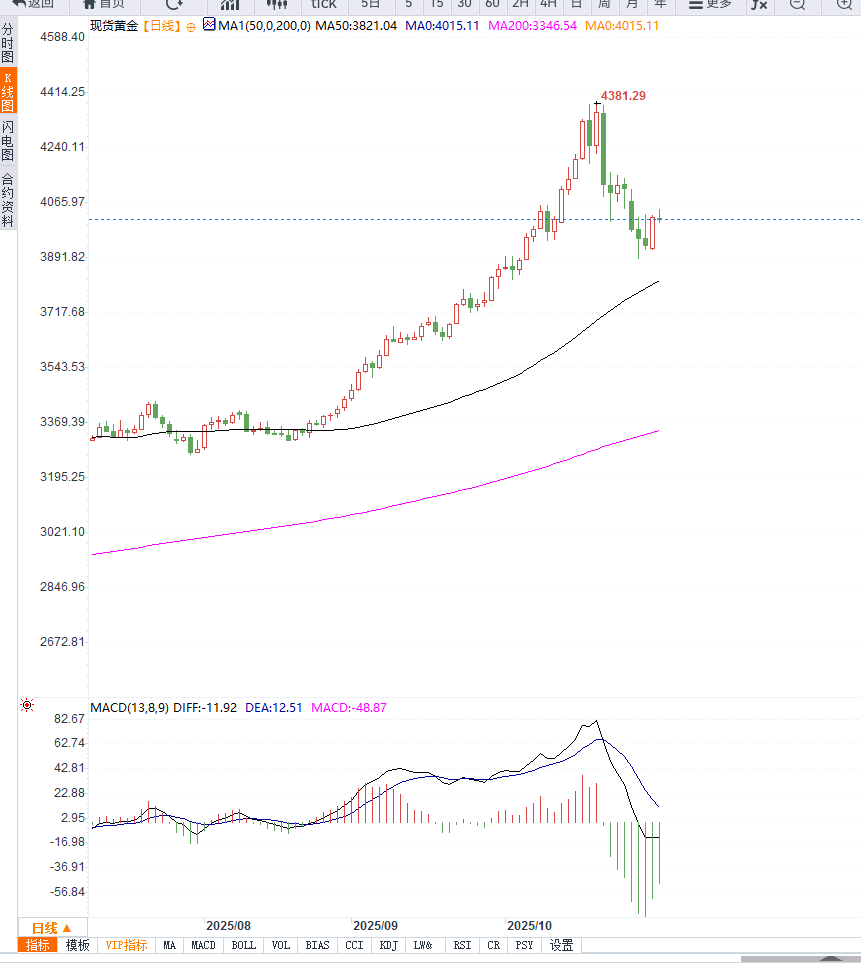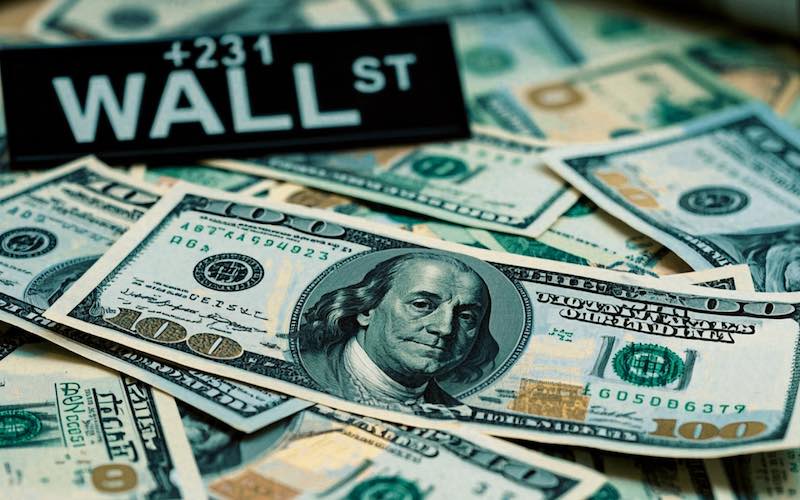The Fed's hawkish signals and easing trade tensions are causing gold to remain range-bound in the short term.
2025-10-31 10:52:50
Market concerns about a potential prolonged US government shutdown fueled risk aversion among investors, thus supporting gold, a non-yielding asset. Meanwhile, the dollar's gains following the Federal Reserve meeting were tempered, creating conditions for gold to stabilize in the short term.
The dollar index retreated after hitting its highest level since August, as investors remained cautious about the outlook for U.S. economic data.

Analysts believe that "the US fiscal impasse has unsettled markets about the economic outlook, prompting investors to reassess gold's defensive value."
The Federal Reserve announced a 25-basis-point rate cut at its latest policy meeting, adjusting the federal funds rate range to 3.75%-4.00%, and plans to stop shrinking its balance sheet in December, marking the end of the quantitative tightening (QT) phase.
However, Federal Reserve Chairman Jerome Powell emphasized after the meeting that another rate cut in December was "not yet certain," a statement that was interpreted by the market as a hawkish signal, pushing up US Treasury yields and limiting the rebound in gold prices.
Analysts commented that "the Federal Reserve's cautious stance on interest rate cuts suggests that interest rates may remain high for an extended period, thus diminishing the attractiveness of holding gold."
Market research indicates that the recent trade easing agreement reached between the United States and Asian countries during the APEC meeting has reduced global risk aversion and diminished gold's safe-haven appeal.
As trade tensions eased, investors reallocated assets to riskier sectors, leading to some capital outflows from the precious metals market. Nevertheless, given the lingering fiscal and political uncertainty in the United States, gold's bottom support remains solid.
Market strategists point out: "Gold prices are likely to fluctuate between $3,900 and $4,050 in the short term. Only when the dollar experiences a sustained pullback will gold be able to break out."
From a technical chart perspective, gold has formed a temporary bottom around $3,900 and is currently attempting to break through the key resistance level of $4,050. If the price can hold above this level, it will confirm the short-term rebound trend and could potentially test the $4,100 and $4,150 range.
If the rebound is met with resistance and the price falls back below $3,980, it may retest the $3,900 support level. Overall, gold prices are still in a weak rebound phase and have not yet formed clear upward momentum.

Editor's Note:
The gold market is currently in a sensitive period where policy and sentiment are intertwined. The Federal Reserve's hawkish stance and easing trade tensions are jointly suppressing gold prices, but the risk of a US government shutdown and a slowdown in the dollar's rise are still providing support for gold prices.
In the coming week, if US economic data is weak or bond yields decline, gold is expected to retest the $4,050 resistance level.
- Risk Warning and Disclaimer
- The market involves risk, and trading may not be suitable for all investors. This article is for reference only and does not constitute personal investment advice, nor does it take into account certain users’ specific investment objectives, financial situation, or other needs. Any investment decisions made based on this information are at your own risk.





















